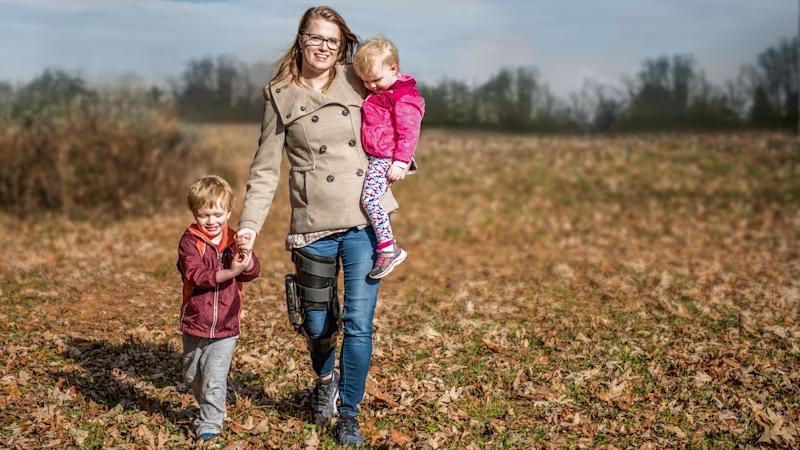Inestabilidad de los ligamentos del tobillo
En el caso de ligamentos inestables en el pie y en el tobillo, el tratamiento dependerá de la causa y de la gravedad de la inestabilidad. Si se ha producido una rotura de ligamentos, es imprescindible efectuar un tratamiento a tiempo con una órtesis.
Causes, symptoms and treatment
The ankle joint is comprised of the upper and lower ankle joint. Joints are made up of articular surfaces, articular cartilage, joint fluid, a joint capsule and ligaments.
The ankle joint complex includes various ligaments. They stabilise the joints in conjunction with muscles that encompass the joints. A corresponding stability of the ligaments is a prerequisite for proper joint mobility and stabilisation.
Congenital or acquired factors can cause ligament weakness (laxity). This commonly results in instability of the joints. Hyperextension of the ligaments or a torn ligament can even cause a complete loss of stability in a joint.
Ottobock supports and orthoses

Causes
The causes of instability, which primarily occurs in the upper ankle joint, can include a congenital or acquired ligament weakness with or without the involvement of other, stabilising structures (for example, the joint capsule, articular cartilage, menisci and muscular structures). Whether external force is involved or not, twisting the ankle can cause the ligaments in the ankle joint to stretch excessively or even to rupture. In general, instabilities in the ankle joint are defined by the number of affected ligament structures. The more ligaments are affected, the more unstable the ankle joint complex will be.
Symptoms
Initially, instability manifests itself in uncertainty while walking, which may be associated with pain and grinding noises when more weight is placed on the joint. Swelling and discolouration occurs in the affected area with acute instabilities, for example, due to a torn ligament. Over the long term, and especially if acute injuries are not properly treated, this is often followed by chronic instability or arthrosis, which is more rapid degeneration of the articular cartilage in the joint.
Diagnóstico
Si se confirma la presencia de una inestabilidad en el complejo articular del tobillo mediante una exploración manual, por ejemplo, la prueba de la inclinación del astrágalo, con frecuencia se realizan procedimientos de imagenología, como TRM, rayos X o ecografías.
Terapia
Es gibt akute und chronische Instabilitäten des Sprunggelenks, die jeweils in ihrer klinischen Versorgung und Versorgbarkeit unterschiedlich behandelt werden. Die Therapie richtet sich also nach der Ursache und dem Schweregrad der Instabilität. Sie erfolgt in der Regel konservativ, das heißt ohne Operation. Bei der konservativen Therapie stehen Physiotherapie und stabilisierende Orthesen im Vordergrund der Behandlung. Bei Instabilität durch einen Bänderriss ist eine phasengerechte Versorgung mit einer Orthese entlang der Heilungsphasen unerlässlich. Eine unzureichende Versorgung führt häufig zu einer chronischen Instabilität im Sprunggelenkskomplex.
Volver a la vida cotidiana: en 3 pasos hasta la órtesis de Ottobock
- Aquí encontrará un resumen de las órtesis y correajes que pueden ser adecuados para usted. Lleve consigo esta lista la próxima vez que acuda al médico.
- Consulte a su médico cuál de las órtesis es la más adecuada para su cuadro clínico. Seguidamente, su médico le extenderá una receta para la órtesis correspondiente.
- Acuda con la receta a una ortopedia. Allí recibirá su nueva órtesis después de haberse adaptado con precisión a sus medidas corporales.
